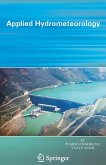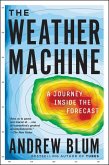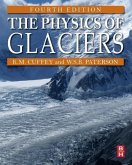Freshwater Ecology, Second Edition, is a broad, up-to-date treatment of everything from the basic chemical and physical properties of water to advanced unifying concepts of the community ecology and ecosystem relationships as found in continental waters.
With 40% new and expanded coverage, this text covers applied and basic aspects of limnology, now with more emphasis on wetlands and reservoirs than in the previous edition. It features 80 new and updated figures, including a section of color plates, and 500 new and updated references. The authors take a synthetic approach to ecological problems, teaching students how to handle the challenges faced by contemporary aquatic scientists.
This text is designed for undergraduate students taking courses in Freshwater Ecology and Limnology; and introductory graduate students taking courses in Freshwater Ecology and Limnology.
Expanded revision of Dodds' successful text.Newboxed sections provide more advanced material within the introductory, modular format of the first edition.Basic scientific concepts and environmental applications featured throughout.Added coverage of climate change, ecosystem function, hypertrophic habitats and secondary production.Expanded coverage of physical limnology, groundwater and wetland habitats. Expanded coverage of the toxic effects of pharmaceuticals and endocrine disrupters as freshwater pollutantsMore on aquatic invertebrates, with more images and pictures of a broader range of organismsExpanded coverage of the functional roles of filterer feeding, scraping, and shredding organisms, and a new section on omnivores.Expanded appendix on standard statistical techniques.Supporting website with figures and tables - http://www.elsevierdirect.com/companion.jsp?ISBN=9780123747242
With 40% new and expanded coverage, this text covers applied and basic aspects of limnology, now with more emphasis on wetlands and reservoirs than in the previous edition. It features 80 new and updated figures, including a section of color plates, and 500 new and updated references. The authors take a synthetic approach to ecological problems, teaching students how to handle the challenges faced by contemporary aquatic scientists.
This text is designed for undergraduate students taking courses in Freshwater Ecology and Limnology; and introductory graduate students taking courses in Freshwater Ecology and Limnology.
Expanded revision of Dodds' successful text.Newboxed sections provide more advanced material within the introductory, modular format of the first edition.Basic scientific concepts and environmental applications featured throughout.Added coverage of climate change, ecosystem function, hypertrophic habitats and secondary production.Expanded coverage of physical limnology, groundwater and wetland habitats. Expanded coverage of the toxic effects of pharmaceuticals and endocrine disrupters as freshwater pollutantsMore on aquatic invertebrates, with more images and pictures of a broader range of organismsExpanded coverage of the functional roles of filterer feeding, scraping, and shredding organisms, and a new section on omnivores.Expanded appendix on standard statistical techniques.Supporting website with figures and tables - http://www.elsevierdirect.com/companion.jsp?ISBN=9780123747242
"[A] very good text, especially in terms of the biotic ecological processes that it covers. In many ways, this textbook provides a really refreshing blend of ecological concepts as they apply to aquatic ecology, in addition to the basic knowledge of freshwater ecosystem organisms that a student would need to apply the concepts. We think that it is a successful, innovative and, for the most part, modern view of the study of inland waters. As seems to be the case with many current texts, this one makes full use of a variety of presentation methods: boxes, biographies, methods boxes and sidebars (which, incidentally, are not on the side). Some are more successful than others. Each chapter also ends with summary points to guide students but, more interestingly, with a series of questions. We found that most of these questions were quite useful and thought-provoking. As in much of ecology, they were often open to a variety of answers and we felt that they would be useful for promoting discussion amongst students. The authors are both primarily stream ecologists and one can often sense greater enthusiasm from them when lotic processes and organisms are discussed. Certain concepts (e.g. disturbance, fish and invertebrate ecology) are explored in greater detail, probably reflecting the authors' backgrounds and interests. However, that said, the discussion of lentic environments is not short-changed and this text would serve any general undergraduate limnology course very well. In fact, in some ways this bias has enabled the authors to provide a refreshing and balanced look at the field , as many older texts have a lake-centric focus." - Limnology and Oceanography Bulletin, March 2011







